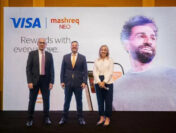After more than two decades of activism, women will soon be allowed to drive in Saudi Arabia. It’s a historic moment, and one that is as much economic as it is egalitarian.
For car manufacturers, the Kingdom’s decision to allow women to drive is much more than a question of equality, it’s also a business opportunity. As callous as that may sound, it’s the truth. In a country where women account for more than half of the tertiary college and graduate degrees, they also only make up 20 percent of the workforce. This translates into roughly 50 percent of their population or human resources, being under-utilized.
Some brands have been quick off the mark and their instantaneous and knee-jerk reaction is easy to understand. According to research from WPP’s Kantar TNS, 82 percent of Saudi women intend to drive when the decree comes into force next year, with Toyota, Hyundai, Ford, Nissan and BMW the most coveted brands.
Indeed, according to a Bloomberg report, Japanese car brand Toyota accounted for 32 percent of the 676,000 vehicles sold in Saudi Arabia last year, while South Korea’s Hyundai ranked second with 24 percent market share. Both will be looking to boost their supply of compact run-arounds and sedans which market research has shown is most in demand by single professional women and students, while also not neglecting to target mothers with toddlers and young children. There is also a knock-on effect which will be felt in other industries. For example, we will have to wait and see what Uber and Careem, which till now saw a healthy traffic of women users in the country, will change in their marketing strategies in order to minimize any downturn in use.
Getting the overall communication right by brands may not be so straightforward. Understanding and targeting the Saudi consumer has been the end goal of most marketers in the GCC for years, such is the country’s level of importance to brands, yet few have managed it with ease and aplomb. Of those consumers, women have been the trickiest to understand and the most consistently enigmatic.
There will therefore be key priorities for any brand seeking to engage with this new female consumer group and to appeal to their sense of style, new independence and taste for technology.
In particular, the younger generation of Saudi females is more open and accepting and is re-shaping the face of Saudi consumerism. In effect, the younger generation are for the first time seeing themselves as playing a central and pivotal role in the social and cultural change that is gradually taking place.
Firstly, utilizing Saudi female creative talent will be of paramount importance.There may not be many of them working in agencies in the Kingdom, but those that are, hold the key to communication that is not only authentic, but nuanced and insightful, tapping into the dreams and aspirations of Saudi women. The new independence which they were seeking and are now beginning to get, will change things not temporarily but forever.
Secondly, Saudi Arabia is one of the most digitally engaged societies in the world, so communication will have to mirror this reality. Figures point to a socially active population, with an estimated 14 million Facebook users, and, according to figures from Google, the highest YouTube watch time per capita in the world. What’s more, YouTube statistics reveal that the fastest growing female creators in the Arab world are from Saudi Arabia, while there has been a 75 percent annual growth in the watch time of female-led content. Add to this an affinity for Snapchat and a tendency towards visual communication and you begin to get a clear picture of what will be necessary for brands to do in terms of communication.
Channeling female content creators as they embark on a historic moment in their country’s history and in their own lives will be essential. So too will a mobile first, socially-centric strategy that embraces a female population that is always on and frequently broadcasts live to the world. We will also see a plethora of real opportunities in the Virtual reality (VR) and Augmented Reality (AR) world just by the sheer fact that the product being marketed, is cars.
Thirdly, local nuances will be essential. Forget re-jigged versions of international advertising campaigns. There will be a need to incorporate slang, local dialects, fashion, style, their own Saudi-influenced pop-culture. It’s the only way communication will be culturally authentic and effective.
Whatever marketing route is embraced by brands, the coming months will be exciting for creative teams in Riyadh and Jeddah, not to forget for those placed nearby in Dubai and other Gulf states, as brands – eager to make the most of what is essentially a once-in-a-lifetime opportunity – begin to develop their advertising strategies to essentially appeal to a new target market.




